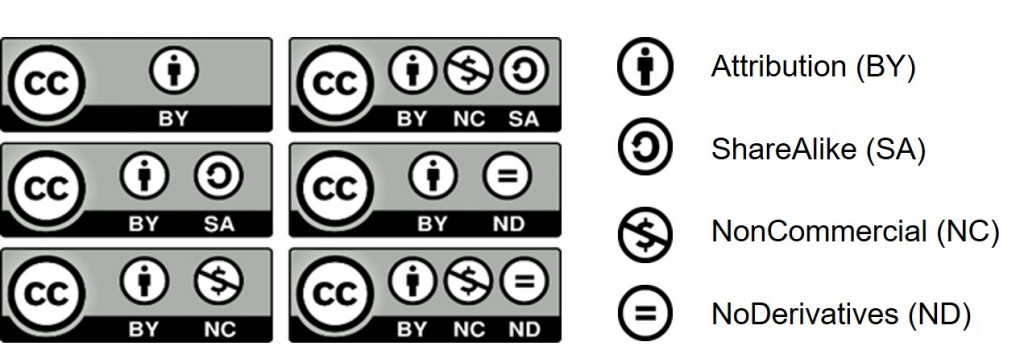Introduction – The What and Why of OER
What are Open Educational Resources?[1]
OER = Free + 5 Rs
OER are learning and teaching materials that are freely and openly available. They range from textbooks to entire courses and everything in between, including videos, podcasts, tests and exercises, websites, software, simulations, case studies, presentation slides, and more. The key is that they can be widely distributed and adapted because they are at no cost to the user and are not subject to the usual copyright restrictions. This openness is most often indicated by a Creative Commons licence.
What can be done with OER? The 5 Rs

Benefits of OER
- OER are free (or low-cost if printed) and thus affordable for students, making education more accessible.
- They can be customized and adapted to the course context and combined with other content and interactive or multimedia elements to provide richer teaching and learning opportunities.
- They offer remote and continued access since most OER are digital, do not require an access code and do not expire.
- They contribute to students’ success and completion by easing their financial burden without having a negative impact on their learning.[2]
- OER can be an opportunity to co-create knowledge with students in the form of renewable assignments rather than limiting their role to that of consumers of information.
The adaptation of existing OER and the creation of new resources are also opportunities to make course materials more accessible, inclusive, and representative for learners. This kind of flexibility rarely exists in traditional textbooks. Because OER are not created to satisfy a commercial market, they can address topics and include perspectives that would otherwise be neglected.
What are Creative Commons (CC) licences?
Creative Commons licences act like a permission. When a creator applies one of the six licences on their work, they retain their copyright but allow the public to share, remix, adapt, and reuse the work legally without having to ask permission or pay additional fees, provided that the user complies with the conditions of the licence.
The six CC licences consist of three elements: the CC logo, icons representing a combination of conditions (which can also be represented by two letters or written out in long form), and the version (4.0 International is the most recent).

The most open of these licences is CC BY, requiring attribution only. The most restrictive (but still more open than copyright’s “all rights reserved” approach) is CC BY-NC-ND, which requires attribution but does not allow for commercial use and adaptations.
Learn more about CC licences on the Creative Commons website.
Other open licences sometimes found on OER
In some disciplines, such as computer science, engineering and mathematics, the following software licences are sometimes used:
GNU General Public License, version 3
Some OER created with the financial support of eCampusOntario’s Virtual Learning Strategy (VLS) have an Ontario Commons licence: OCL 1.0 or OCL-ND 1.0. The former is comparable to CC BY-NC while the latter is similar to CC BY-NC-ND, but with additional restrictions. The main difference is that they apply only to educators and students in the Ontario post-secondary sector (“Eligible Educators” and “Eligible Students”). Other uses by other members of the public require permission from the copyright holder.
- This section is adapted from the University of Ottawa Library OER guide, "Open Educational Resources (OER)," CC BY 4.0 ↵
- V. Clinton & S. Khan, (2019), “Efficacy of Open Textbook Adoption on Learning Performance and Course Withdrawal Rates: A Meta-Analysis,” AERA Open, CC BY-NC 4.0. R.S. Jhangiani et al., (2018), “As Good or Better than Commercial Textbooks: Students’ Perceptions and Outcomes from Using Open Digital and Open Print Textbooks,” The Canadian Journal for the Scholarship of Teaching and Learning 9(1). C. Hendricks et al., (2017), “The Adoption of an Open Textbook in a Large Physics Course: An Analysis of Cost, Outcomes, Use, and Perceptions,” The International Review of Research in Open and Distributed Learning 18(4), CC BY 4.0. H.M. Ross et al., (2018), “Open Textbooks in an Introductory Sociology Course in Canada: Student Views and Completion Rates,” Open Praxis 10(4), CC BY 4.0. ↵

